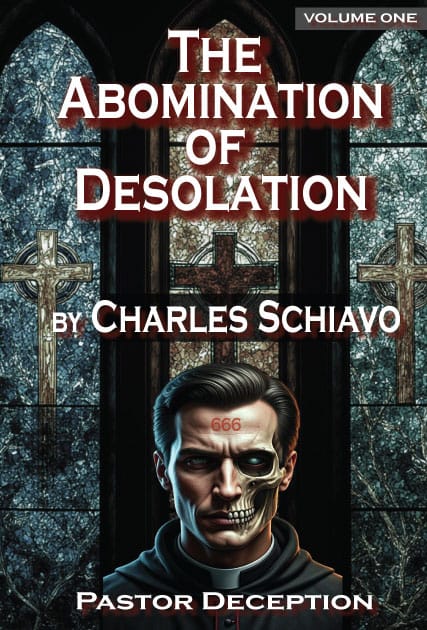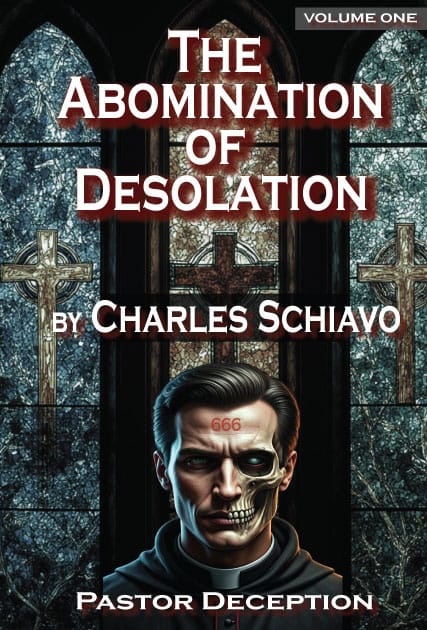As someone who assisted in publishing this book, I had the pleasure of engaging deeply with Charles’s ideas. His work is not just a study of biblical prophecy; it is a challenge—to read scripture with precision, to test its claims, and to consider its implications for the past, present, and future. Throughout this book, Charles urges readers to pay close attention to key passages, particularly in Daniel 11 and Reve-
lation 17, as they provide a prophetic lens through which history and destiny converge.

The Abomination of Desolation
The Abomination of Desolation, Book 1 explores biblical prophecy, Daniel 11, Revelation 17, and salvation. Charles Schiavo challenges false doctrines and urges readers to prepare for the final judgment and stand firm in faith.
A central influence on Charles’s work is The Great Controversy by Ellen G. White. In that text, White presents history as the unfolding of a cosmic struggle between truth and deception, between God’s law and human rebellion. Charles expands on this framework, refining its implications and applying them to our time. Like White, he sees prophecy not as a collection of vague or mystical predictions, but as a structured, historical account of God’s interaction with humanity. To approach this book as a philosopher, particularly a Platonist, is to recognize its search for an underlying order beneath the surface of religious history. Plato taught that beyond the world of appearances lies a realm of Forms—unchanging, eternal truths that shape the transient realities we experience. In a similar way, The Great Controversy and The Abomination of Desolation suggest that history is not a series of random events but the unfolding of a divine pattern. Charles’s method is rigorous and exacting; he asks not only what the scriptures say, but how they align with historical developments and eschatological truth. Both The Great Controversy and this book argue that we are living in a climactic moment of history. As in Plato’s Allegory of the Cave, where the philosopher struggles to bring light to those in darkness, Charles’s work is an attempt to illuminate the forces at play in the world—forces that many do not recognize. He challenges readers to examine not just their beliefs but their assumptions about reality itself. The battle over truth, as both White and Charles argue, is not merely a theological debate; it is the foundation of history’s final conflict.
This book is not an easy read, nor is it meant to be. It demands careful thought, rigorous examination, and a willingness to question comfortable narratives. Whether you are a believer, a seeker, or a skeptic, Charles’s approach insists on intellectual engagement. He does not ask for passive acceptance but for critical reflection. In that spirit, I encourage you to read this book with an open but discerning mind. Consider its claims, weigh its arguments, and above all, seek the deeper reality beneath the surface of the text.

